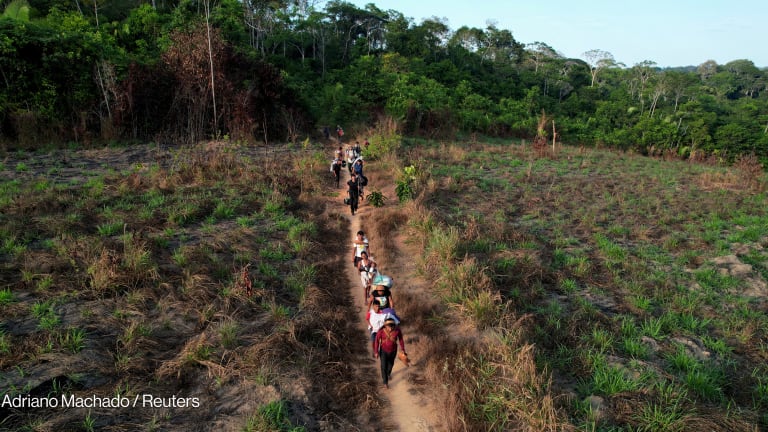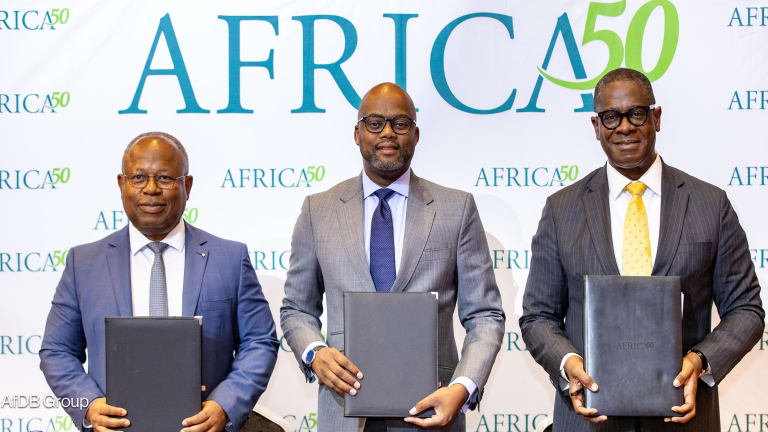
Nature-based solutions are a good news story. Investing in them can help restore ecosystems and improve biodiversity while also protecting communities from the impact of climate change, create new jobs, and ultimately help sustain life on our planet.
At the same time, nature loss poses a significant risk to companies and investors, and the rapid progress on developing nature disclosure and risk management frameworks, such as the Taskforce on Nature-related Financial Disclosures, or TNFD, will shed further light on the extent of these risks to companies.
As a result, there is a growing interest in scaling nature-based solutions as an asset class — but the need for capital to implement NBS is acute. This is particularly true in emerging markets that are bearing the brunt of changing weather patterns, including drought and flooding. The United Nations estimates that $4.1 trillion is needed to fund the NBS required if the world is to meet the Paris climate agreement targets by 2050. Only 3% of that sum has been pledged to date, a figure that needs to triple by 2030, according to the U.N.
When leaders gathered for the 77th session of the U.N. General Assembly last month, they renewed their commitment to reverse biodiversity loss and fight climate change, with Germany more than doubling its previous commitments and the Glasgow Financial Alliance for Net Zero encouraging its more than 450 members to eliminate commodity-driven deforestation from their portfolios.
So, how can development finance institutions, governments in emerging markets, and private investors work together to secure sustainable funding for the nature-based projects we urgently need to ensure these targets are achievable?
DFIs as the catalyst
NBS are still a new type of asset class, and we believe development finance has a vital role to play in demonstrating market-based financing mechanisms that work for the sector.
On the occasion of the 77th session of the UN General Assembly, Devex, FinDev Canada, ANZ, and Pollination hosted the event “Unlocking sustainable finance for nature-based solutions”, you can watch the conversation here.
There are a couple of reasons for this. Firstly, there is still very little data from monitoring and tracking of NBS available, and secondly, there are only a small number of nature-based projects, relative to the broader market for climate-aligned projects, being brought to market.
These are the same challenges we faced in the renewable energy space only a few years ago, where DFI engagement has consistently helped catalyze projects by backing new business models, supporting local developers, and engaging clients to provide greater data and disclosure.
In sub-Saharan Africa, for example, the $120 million Energy Entrepreneurs Growth Fund is using blended finance to back small companies that help off-grid households and businesses access clean energy. EEGF was initiated in 2019 by the Shell Foundation and FMO, the Dutch development bank. Earlier this year, FinDev Canada announced that it would invest $13 million in the fund to further scale the nascent off-grid market in low- and middle-income countries.
Another example can be found in India, where ReNew Power, on its path to becoming one of the largest players in the Indian renewable energy market, secured critical early-stage equity and project financing from the Asian Development Bank, the Global Environment Facility, and the U.S. Development Finance Corporation, among others. Today, ReNew is a publicly traded, locally-run project developer with 12.9 GWs of commissioned and committed renewable energy capacity.
The International Finance Corporation’s Green Bond Technical Assistance Program seeks to foster the supply of emerging market green bonds, many of which are used to invest in pioneering renewable energy projects. The program offers education for issuers in emerging markets and advises them on best-practice impact and ESG data and reporting to attract investors.
Seizing the NBS opportunity
Similar to what has been done in the renewable space, multilateral development banks and DFIs have an opportunity to back NBS projects with patient capital and expertise in often complex, emerging markets. They can back new business models, work with local developers to build up their skills and experience in this new type of projects, and support clients to enhance data and disclosure on nature risk and opportunity, including cutting-edge practices such as drone monitoring and the use of blockchain to verify transactions.
We believe using development capital to build up the sector — with a particular focus on scaling capacity of local project developers — will mobilize private capital in the years ahead. NBS will become a more established and less risky asset class once private investors can refer to a body of data on proven returns and have a greater number of compelling projects to back.
Increasing the number and scale of successful NBS projects needs collaboration across a diverse set of partners, including DFIs, development banks, donors, commercial, and impact investors, as well as conservation organizations.
Mitigating the impact of climate change and biodiversity loss on the world’s low-income communities, and learning to manage land and natural capital sustainably is the prize. We believe development finance is our best chance of securing it.










